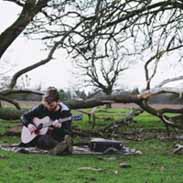Central And South America Flashcards, test questions and answers
Discover flashcards, test exam answers, and assignments to help you learn more about Central And South America and other subjects. Don’t miss the chance to use them for more effective college education. Use our database of questions and answers on Central And South America and get quick solutions for your test.
What is Central And South America?
Central and South America are two of the most culturally diverse and geographically interesting regions in the world. The countries found within these two regions have their own unique histories, cultures, languages, and religions that have been shaped by centuries of colonial occupation, civil wars, revolutions, independence movements and more.The region known as Central America is located between North America to the north and South America to the south. It is composed of seven nations: Belize, Costa Rica, El Salvador, Guatemala, Honduras, Nicaragua and Panama. These countries are mostly tropical or semi-tropical in climate with some areas having rain forests or dry deserts. Central American countries were colonized by Spain during the 16th century but they fought for independence during the 19th century which led to a series of civil wars throughout this region which lasted until 1948 when all seven nations had established their independence from Spain. Despite being relatively small in population size Central America has a rich cultural heritage with an array of indigenous populations as well as a mixture of Spanish and African influences that can be seen throughout its art forms such as music and dance. South America is located south of North America across the Caribbean Sea. This region includes twelve countries: Argentina, Bolivia Brazil Chile Colombia Ecuador Guyana Paraguay Peru Suriname Uruguay Venezuela plus French Guiana which is an overseas territory belonging to France. South American countries have a rich history dating back thousands of years where many ancient civilizations flourished such as those found in Peru’s Inca Empire or Mexico’s Aztec civilization before European colonization began in 1492 when Spanish explorer Christopher Columbus arrived on what would become present day Venezuela coastlines setting off centuries worth of change for this region culminating with independence from Spanish rule also occurring in nineteenth century leading to modern day nation states like Brazil or Argentina amongst others who today proudly identify themselves according to their respective language national identities cultural practices religions etcetera In conclusion Central And South American both possess incredibly varied history culture language religion art forms architecture music customs fashion beliefs etcetera that together form one interwoven tapestry comprised by each individual country’s unique characteristics making them must visit destinations for anyone interested in experiencing firsthand some truly fascinating parts of our planet Earth.























